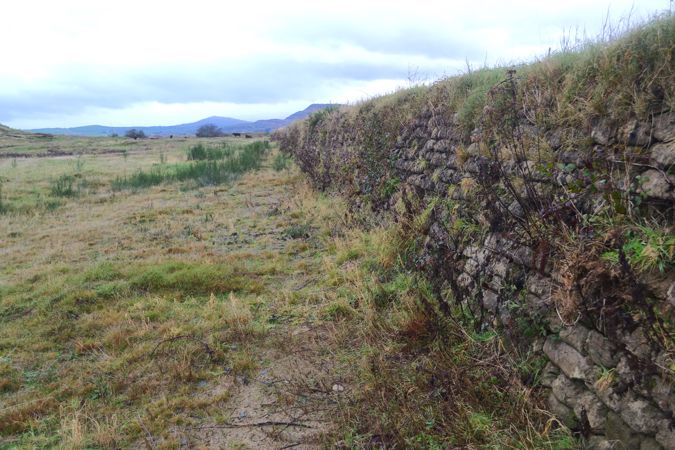Troop gunnery range subject of first archaeological survey

New light has been shed on one of the most important anti-tank training ranges used during the Second World War.
For the first time Gwynedd Archaeological Trust (now part of Heneb - the Welsh Trust for Archaeology) carried out a professional archaeological survey on part of the 1,000 acre Morfa Gunnery Range, located in what is now Harlech Forest.
The survey was funded by the Sands of LIFE project which has been working to enhance and protect the nearby dunes.
The range was used to train troops in anti-tank warfare and was one of the main training facilities in Britain, playing a significant part in improving the Allies’ capabilities.
The centrepiece of the range, a 5km-long target railway known as the Gunnery Range Railway, remains visible as a two-metre high protective bank supported by a wall made from concrete-filled sandbags.
Engines towed rail cars with targets attached along the railway while troops fired anti-tank guns at them.
The full route of the target railway was identified using laser imaging techniques and aerial photographs, with a 1km length surveyed on the ground in detail.
Most of the railway embankment was covered in impenetrable scrub, bramble, debris and conifer trees, but nearly 1km of the bank was cleared by Natural Resources Wales (NRW) as part of the EU-funded Sands of LIFE project which enabled this section of the railway to be inspected and surveyed.
Jane Kenney, of Heneb, led the survey, she said:
"The railway is a really exciting relic, about which we knew very little before.
“Despite its size and importance, the training range has never been fully researched and recorded and clearing parts of the site allowed us to find out more about it.
“Although relatively recent history, the importance of Second World War archaeology is becoming increasingly recognised by experts and the public alike.
“Anti-tank training ranges were rare in Britain at the time, and this is a particularly well-preserved example with an unusual and extensive track system for the targets.”
At the site there are also buried remains of a camp with accommodation for troops, engine sheds and links to the mainline railway.
In recent years, separate unexploded ordnance mitigation works by Sands of LIFE uncovered two live projectiles, which had to be disarmed by experts, as well as shrapnel and mortar fins.
Kathryn Hewitt, Sands of LIFE Project Manager for NRW, said:
“We are pleased to have worked with Heneb to learn more about this important part of the area’s history.
“The clearance work we have carried out allowed this important Special Area of Conservation to be fenced and grazed to maintain its wildlife value.
“But as well as helping protect the natural environment, this work has made this important historical structure easier to see and access.”
Much of the range is still hidden beneath Harlech Forest but the public can follow the wartime concrete roads and see the railway embankment at the most westerly side of the forest where it opens out onto the dunes.
The full archeological report can be downloaded from Heneb.
